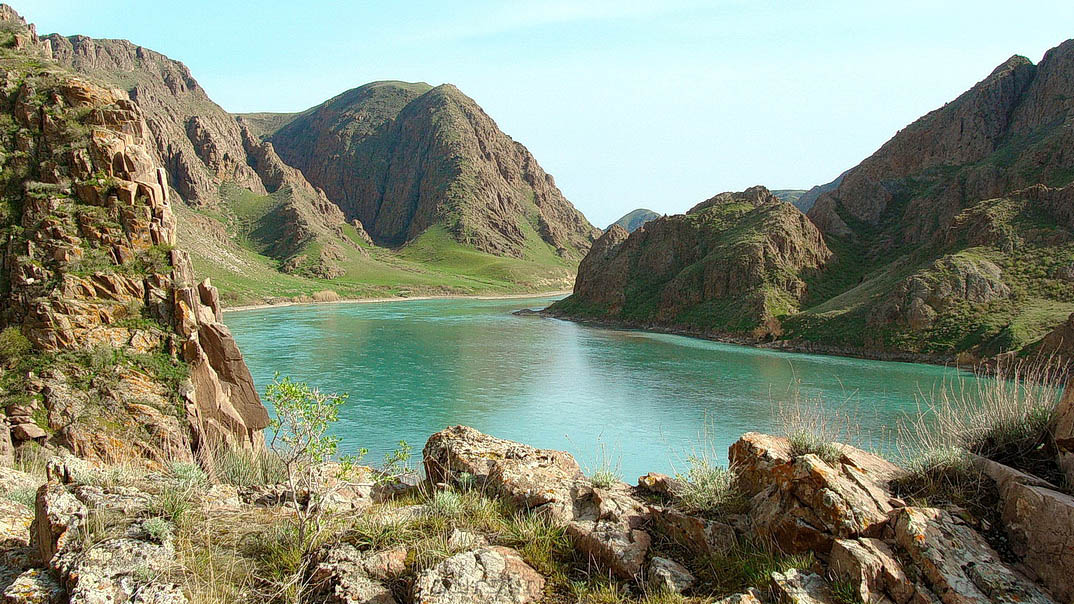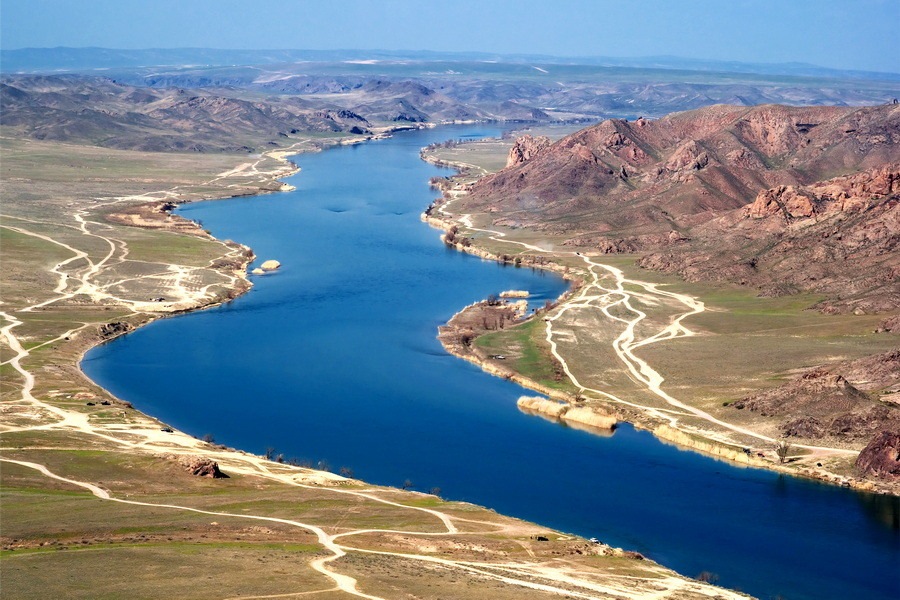Ili River

The Ili River, gracefully winding through the heart of Central Asia, is not just a watercourse; it is a living testament to the rich cultural tapestry that has unfolded along its banks over centuries. Beyond its azure waters lies a profound significance woven into the very fabric of Central Asian heritage. The Tekes and Künes rivers in Eastern Tian Shan Mountains are the origins of the river. In this exploration, we unravel the cultural importance of the Ili River, tracing the historical narratives, Silk Road influences, and vibrant heritage that make it a cultural oasis in the vast landscapes of Central Asia.
1. Historical Roots: The Ili River as a Witness to Ages
The Ili River has silently observed the rise and fall of empires, the movement of nomadic tribes, and the ebb and flow of cultures throughout history.
Ancient Civilizations:
The river’s banks have been home to ancient civilizations, with evidence of human settlement dating back thousands of years. Archaeological discoveries along the Ili attest to the early cultural exchanges that took place in this region.
Silk Road Crossroads:
As a key artery of the Silk Road, the Ili River played a pivotal role in facilitating trade and cultural interactions between East and West. Merchants, scholars, and artisans traversed its waters, leaving an indelible mark on the cultural landscape.
2. Cultural Crossroads: Ethnic Diversity Along the Ili
The Ili River Valley has been a meeting point for various ethnic groups, contributing to the rich diversity that characterizes the region.

Kazakh Nomadic Heritage:
The Kazakh nomads, with their distinctive way of life, have a deep connection to the Ili River. The river provided sustenance for their herds and served as a route for seasonal migrations, shaping the nomadic culture along its banks.
Uighur and Dungan Influences:
The presence of Uighur and Dungan communities along the Ili adds layers to its cultural tapestry. The blending of Turkic and Chinese influences is evident in the architecture, cuisine, and traditions of these communities.
3. Architectural Gems: The Heritage Embodied in Structures
The architectural heritage along the Ili reflects the diverse cultural influences that have left their mark on the landscape.
Mosques and Mausoleums:
Historic mosques and mausoleums along the Ili stand as architectural marvels, showcasing the artistic and spiritual expressions of the communities that settled here. These structures are not just buildings but living monuments to the cultural legacy.
Traditional Yurts:
Nomadic heritage is embodied in the traditional yurts dotting the landscapes along the Ili. These portable, felt-covered dwellings are not just shelters; they are symbols of a way of life intimately tied to the natural rhythms of the river.
4. Cultural Festivals and Traditions: Celebrating Heritage Along the Ili
The Ili River region hosts a myriad of cultural festivals and traditions that celebrate the diversity of its heritage.
Nauryz Meyram:
The Nauryz Meyram festival, marking the Kazakh New Year, is a vibrant celebration along the Ili. It brings communities together, showcasing traditional music, dance, and the joyous spirit of renewal.
Eid Al-Fitr Celebrations:
Muslim communities along the Ili mark the end of Ramadan with colorful Eid Al-Fitr celebrations. These festivities include communal prayers, feasts, and acts of charity, reflecting the religious diversity of the region.
5. Environmental Stewardship: Cultural Connection to Nature
The cultural importance of the Ili is not confined to human activities but extends to the relationship between local communities and the natural environment.
Nomadic Ecological Wisdom:
Nomadic communities along the Ili have developed a deep ecological wisdom, harmonizing their way of life with the rhythms of nature. The sustainable practices of these communities showcase a cultural ethos rooted in environmental stewardship.
Conservation Efforts:
Contemporary initiatives along the Ili focus on preserving the natural beauty of the river and its surroundings. Environmental conservation has become intertwined with cultural preservation, reflecting a holistic approach to heritage.
Conclusion:
The Ili, with its meandering waters and picturesque landscapes, holds a cultural significance that transcends time. From ancient civilizations to Silk Road caravans, nomadic tribes to diverse ethnic communities, the river has been a witness to the unfolding stories of Central Asia. Its cultural importance lies not only in the tangible heritage of architecture and festivals but also in the intangible threads that connect communities to their roots and nature.
As we navigate the currents of the Ili’s cultural tapestry, we discover a profound legacy that continues to shape the identity of Central Asia. The river’s cultural importance is not a static relic of the past but a dynamic force that flows through the veins of the communities along its banks, inviting us to immerse ourselves in the enduring harmony of heritage.
Know More about Ili River.
What are The Religious Places of Ili River?
When Did The Ili River Basin Become a Focus?
Where is The Ili River Located?
Who Were The Key Historical Figures and Civilizations of The Ili River?
How to Reach Ili River?




